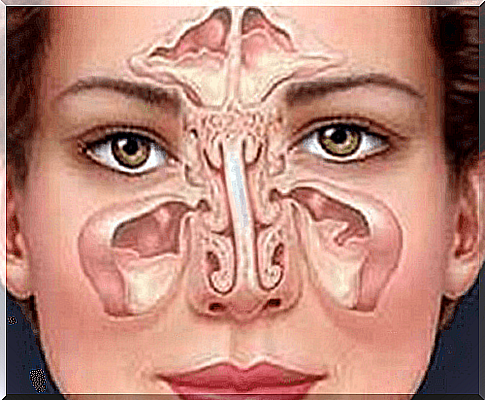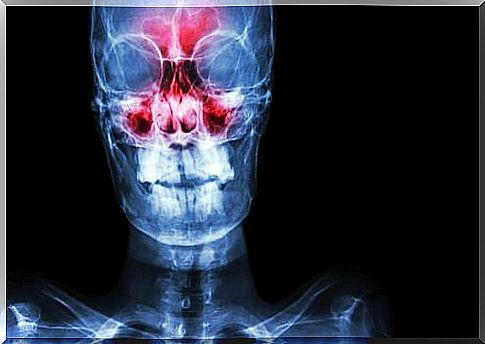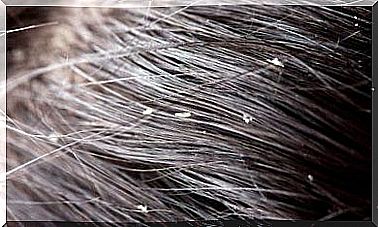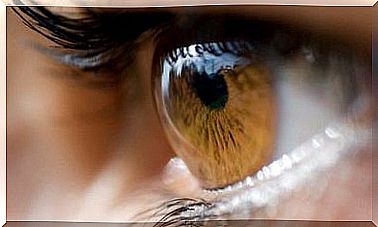Sinusitis: Origin, Symptoms And Diagnosis
Sinusitis, also known as sinusitis, is a completely curable disease if it is recognized early. However, it causes pain, difficulty breathing and general malaise.

The sinusitis (sinusitis) is an inflammation of the mucous membrane in the nasal sinuses. The sinuses are two small cavities through which the air you breathe circulates between your nasal bones. There are a number of symptoms associated with sinusitis .
There are four different sinuses in humans: the frontal sinus, maxillary sinus, sphenoid sinus and ethmoid cells.
Normally, the air you breathe can flow freely through these cavities.
But when the sinuses are inflamed, breathing is difficult. In addition, severe pain can occur, sometimes accompanied by fever.
There are usually no disease-causing bacteria or other organisms in your sinuses. In a healthy state, the natural nasal secretion can flow unhindered inwards into the pharynx. But as soon as too much nasal secretion and mucus form or the sinuses are blocked, this forms an ideal breeding ground for a wide variety of microorganisms. This can lead to sinusitis.
Causes of the development of a sinus infection
If too much nasal secretions build up in the sinuses and they become blocked, it can develop into sinusitis. This can be caused by various causes. We have listed the most important ones for you below:
- Allergies and colds cause excessive mucus production in the nose.
- Abnormal protrusion of bones in the nose
- Crooked nasal septum
- Nasal polyps
- Disturbance of the cilia (olfactory hairs located in the nasal cavity): the nasal secretions can no longer be removed naturally.

In addition, there are other risk factors that can lead to the development of a sinus infection or at least promote the symptoms of the disease.
The most important risk factors are: cystic fibrosis, hay fever or allergic rhinitis (rhinitis), a weakened immune system, enlargement of the tonsils (adenoid hypertrophy), changes in pressure (e.g. when diving or mountain hiking) or the influence of gravitational forces (e.g. when flying) and of course smoking.
Symptoms and types of sinusitis
There are four different types of sinus infections in total. They differ in the duration of the illness:
- Acute sinusitis : lasts up to four weeks
- Subacute (less severe) sinusitis : lasts up to 12 weeks
- Chronic sinusitis : lasts more than 12 weeks
- Recurrent sinusitis : several illnesses during a year
- (Temporary) loss of smell and bad breath
- Cough which gets worse at night
- Tiredness and exhaustion
- Pain
- a headache
- Pressure pain in the area of the nose
- Pain behind the eyes
- Toothache
- Increased sensitivity in the face
- Nasal congestion
- Runny nose
- Sore throat
In the case of acute sinusitis, the symptoms generally appear about a week after a cold starts. If you have chronic sinusitis, you will have similar symptoms. However, in this case they are not quite as pronounced as in acute sinusitis. But they stop for a long time.
Sinus infection: diagnosis
Usually, a sinus infection will be diagnosed by examining your nose. The doctor shines a special light into your nose and examines it for polyps or typical signs of inflammation.
In doing so, he will also put some pressure on the nasal area. This is how the doctor can tell if you are in pain. Pain or tenderness in the nasal area is a pretty sure sign of a sinus infection.

In addition, the doctor will order further examinations to reliably diagnose the disease: a nasoscopy (medical term for this is rhinoscopy), a computed tomography (CT) or a magnetic resonance tomography (MRT). An X-ray examination, on the other hand, rarely delivers reliable results.
In addition, additional tests may be required: a swab of the nasal secretions, a cell test (cytology) or a blood count to check the condition of your immune system. Tests for existing allergies, cystic fibrosis or the examination of the ciliary function (olfactory hairs) can also be ordered by the doctor.
Sinus infection: prognosis and complications
If sinus infections are treated in time, the chances of recovery are usually very good. In this case, you will not suffer any further long-term effects of the disease.
It is therefore very important that you receive the correct treatment and that you follow the doctor’s instructions carefully. Then you will normally get well again. However, if you have recurring sinusitis, it is a sure sign that the cause of the condition has not been treated properly.
There are usually no complications with sinusitis. But if complications do arise, then you have to take them very seriously. The most common complications of sinusitis are:
- Asthma that developed from chronic sinusitis.
- Visual disturbances that can develop if an infection spreads to the eyes. In the worst case, this can lead to loss of vision or complete blindness.
- Blood clot or aneurysm. Sinusitis can affect the veins around the sinuses. If this happens, the blood supply will be cut and you could possibly have a stroke.
- This complication can occur if the inflammation spreads around or near your brain.
In addition to the above, there are other possible complications that do not occur very often: Inflammation of the bone marrow (osteomyelitis) and inflammation of the skin around the eyes. Any complication must be treated as quickly as possible by a specialist doctor or in a hospital.









